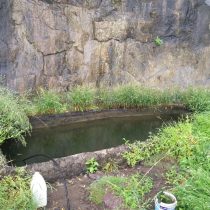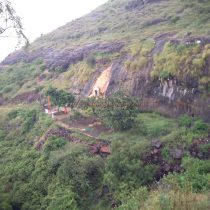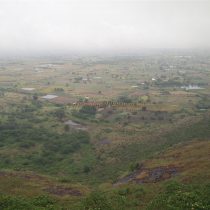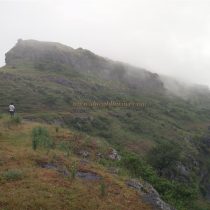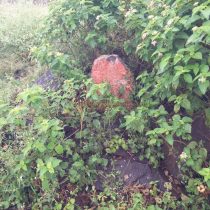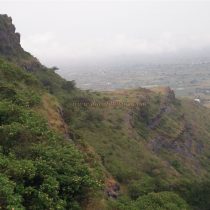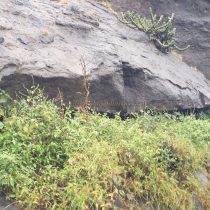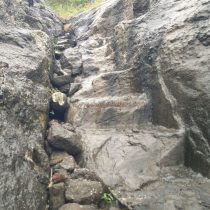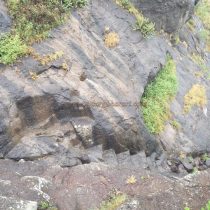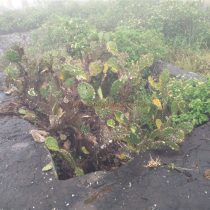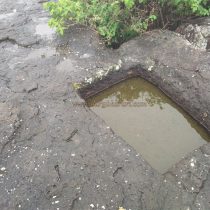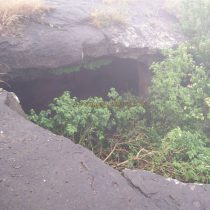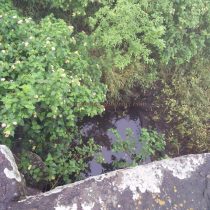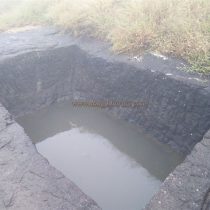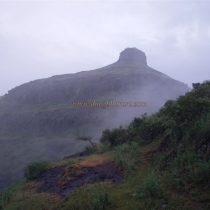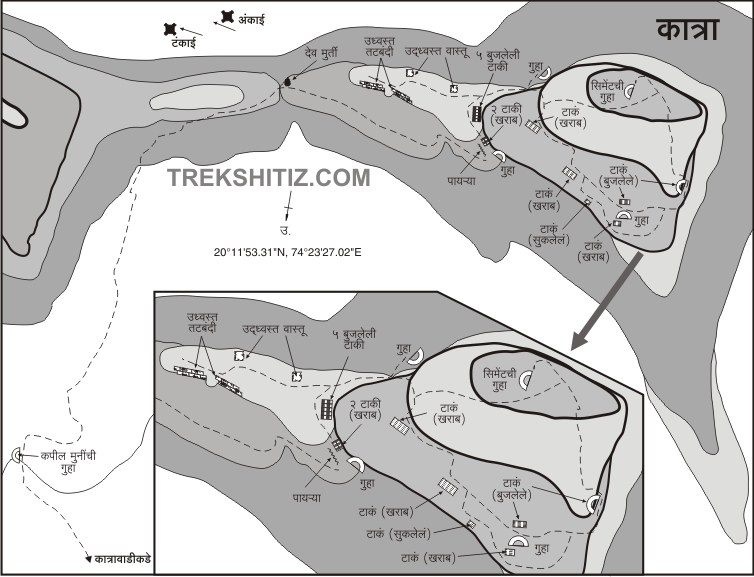KATRA
TYPE : HILL FORT
DISTRICT : NASHIK
HEIGHT : 2810 FEET
GRADE : MEDIUM
While exploring the Nashik district, you come across many unfamiliar forts. There are more unfamiliar forts than familiar forts in this district. The footsteps of the trekkers also turn to these forts that are constantly neglected. In the Nashik district, along with the mainline of Sahyadri, various sub-lines like Selbari-Dolbari and Ajanta-Satmal ranges can be seen. Among these is a hill range a little detached from the Ankai-Tankai fort in the Ajanta-Satmal range. At the beginning of this mountain range is Gorakhgad fort, behind it is Shambhumahadev hill and at the end is Katra fort which is unknown to most of the people. If you have a private vehicle and a period of three days, you can visit many unfamiliar forts like Ankai-Tankai, Gorakhgad, Katra, Mesna, Rajdeher, Nastanpur, and Manikpunj on the Ajanta-Satmal range.
...
While walking around the first 5 forts in the Manmad area, we are constantly hovering around a pinnacle. In this area, this pinnacle is known as Hadbi's Shendi. Katarwadi village in Chandwad taluka of Nashik district is at the base of this fort, 75 km from Nashik via Niphad-Lasalgaon road. It is at a distance of 95 km from Chandwad-Manmad. Katarwadi village is 13 km from Manmad city. There is a fork on the Manmad-Yeola road from Ankai railway station to Katarwadi village. The base of the fort is at a distance of 5 km from this fork. Kapilmuni's ashram is at the foot of Shambhumahadev hill near Katra fort at the back of Katarwadi village. There is an unpaved road from the village to this ashram. If you have a private vehicle with you, you can reach Kapilmuni Ashram by this vehicle. There is a Maruti temple at a short distance from the ashram. In the temple precincts, some recent monuments (not hero stones) have been erected. You can stay overnight at this temple. Dadasaheb Gangurde, who lives at a short distance from the temple, can provide with water and a meal if asked in advance. After walking 5 minutes from the temple, we reach Kapilmuni Ashram. Kapilmuni Ashram is a large cave carved in the rock and the idol of Kapilmuni is installed in this cave which is painted in saffron color. A monk named Rajubaba has been living in this cave for 15 years. The premises of the ashram are kept clean and tidy and flowers are planted on the premises. The water from the hill is bought to the tank in the ashram with sloping pipes. This water is used by wild animals for drinking. Since Rajubaba is currently living in the cave, he knows the entire fort and if requested, he comes to show the fort. Rajubaba was on Maunvrat for some time but now he isn’t. After visiting the ashram of Kapil Muni, one would climb the hill to the right of the cave and head towards the gorge between Shambhumahadev hill and the Katra fort’s hill. Since there is no clear route to Katra fort, the access to the fort is not very smooth, so we have to reach the gorge using the steep slopes. In the bush in the gorge, a stone is given the form of deity. Turn right through this gorge, keeping the hill of Katra fort on the left side and the valley on the right side. There are a lot of trees growing on this road. At this place, steps are carved in the rock to reach the fort. As you climb these steps, you will see three caves carved into the rock on the right. The mouth of two of these caves is closed by a stone construction. To see these caves, one has to walk along the dangerous cliffs where one can barely walk but even that is not possible during the rainy season. On the right side of the road, you can see two water cisterns filled with soil and overgrown with bushes. At the upper side of these cisterns are two small caves with a square-shaped entrance. After seeing the cave, turn left and climb a few steps to reach the top of the fort. It takes one hour to reach here from Kapilmuni Ashram. There is a hill in front of the fort and on the way to this hill, you can see a group of 5 cisterns on the right side. At the back of this group of cisterns, on the south end of the fort, you can see the quadrangle structures of some buildings. Turning back from this point, you can see the remains of a fortified bastion on the right side of the valley. Going further from the cistern towards the hill, you can see the wharf going down from the fort on the left side. At this point, if you carefully descend the 15-foot cliff, you will see a long meditation cave carved into the cliff. This cave is not visible from above as bushes are growing at the mouth of this cave. Rajubaba, who lives on the fort, used to stay in this cave. When you come to the top of the cave, turn around and start walking on the left side. Coming straight ahead from this cistern, you can see another cistern extinguished with soil on the way. When you proceed further from this cistern, you can see the cave carved in the rock with 2 pillars on the slope of the hill. There is also a water cistern in front of this cave. After seeing the cave and going straight ahead, we reach the northern end of the fort. This place has a cave or a pillared cistern hidden in the trees but it is inaccessible due to a large amount of bush growing at its entrance. After seeing the cave and starting to climb the hill in the middle of the fort, we reach the highest point of the fort after a 5-minute vertical climb. Here is a meditation cave built of cement and Rajubaba was staying on the fort next to the flag pole. From here you can see the entire area around the fort as well as Ankai-Tankai, Gorakhgad, Mesna forts, and the Shendi pinnacle of Hadbi. After descending from the hill to the group of five water cisterns, your fort round is complete. One hour is enough to see the entire fort. Considering the size of the fort and its remains, this fort must have been used only for surveillance. Apart from the mention in the Nashik District Gazetteer, no other mentions about this fort are found.
© Suresh Nimbalkar




